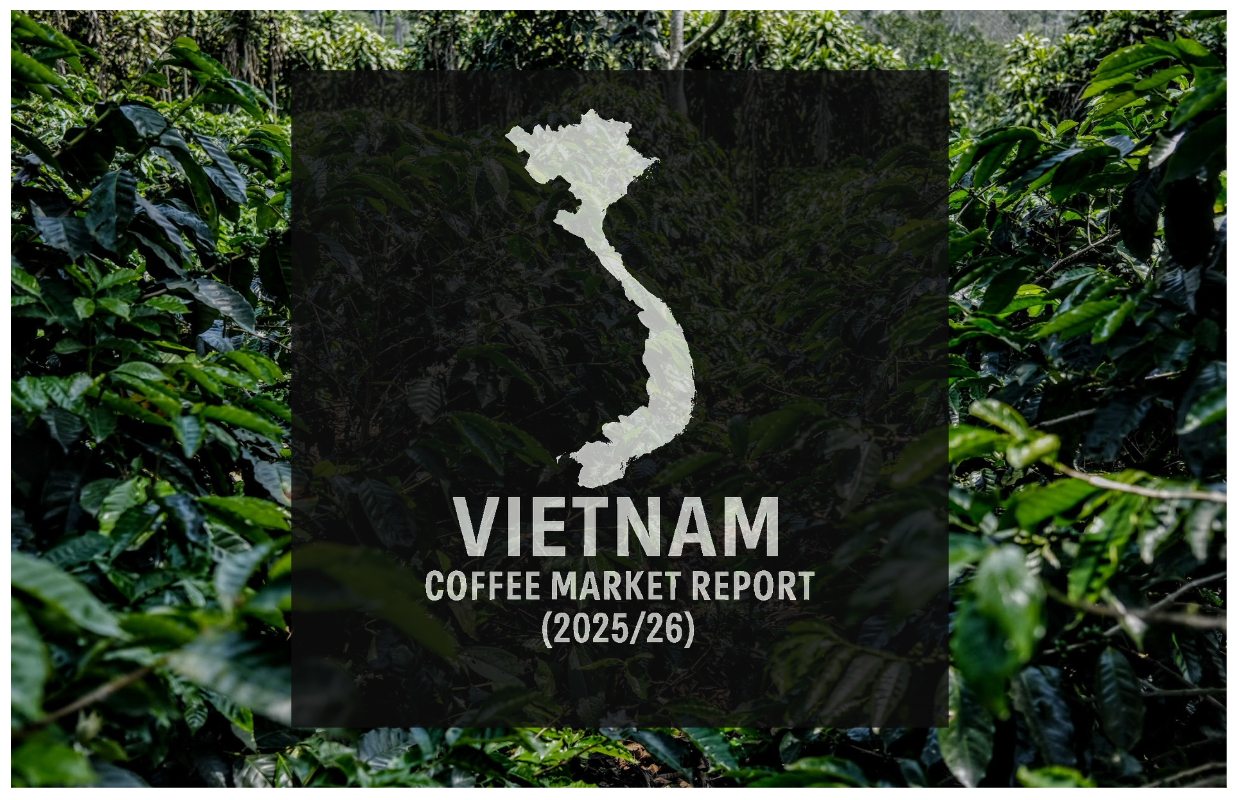Coffee production in Vietnam is forecast to reach the equivalent of 31 million 60-kilogram bags in the 2025/26 market year (October to September), up from 29 million in the previous year, according to the latest USDA estimates.
Robusta remains dominant, with 30 million bags forecast, while arabica accounts for approximately 1 million. High global prices, favorable weather and expanded use of inputs are driving production gains, especially in the Central Highlands.
Total exports are projected to increase to 27 million bags, supported by strong global demand. Processed coffee exports — both soluble and roasted — are expected to reach 3.3 million bags, due in part to growing consumption in other parts of Asia. While green bean exports still account for about 90% of total volume, that share is declining.
Domestic consumption is expected to rise to 4.9 million bags in 2025/26, reflecting continued urban growth, a thriving cafe sector and changing consumer preferences, particularly among younger buyers.
These and other predictions are outlined in the latest USDA Foreign Agricultural Service annual report on the Vietnam coffee sector.
[Note: This is part of a series of DCN stories that will explore USDA FAS annual coffee reports. The information agency typically delivers more than a dozen country-level reports on the coffee sector, each coming from different authors and field offices.]
📉 Export Outlook
-
Total coffee exports are forecast at 27 million bags, up from 25.8 million in 2024/25.
-
Green bean exports are expected to reach 23.7 million bags, driven by strong global demand and improved availability.
-
Soluble and roasted exports will grow to 3.3 million bags, up from 2.8 million last year, as processing investments pay off amid increased demand.
-
Vietnam customs data shows a 23% year-over-year export decline in the first half of 2024/25 due to tight domestic supply and farmer stockpiling.
-
Key export markets include Germany, the United States, Italy, Japan and Spain. However, Asian markets like China, Korea, the Philippines and Indonesia are growing export markets for Vietnamese coffee.
-
The Philippines, China and Indonesia paid premium prices for Vietnam’s coffee in 2024/25, ranging from $4,166 to $4,424 per ton, while Italy had the lowest unit price, at $3,260 per ton.
🌱 Production and Growing Conditions
- 2025/26 production is forecast at 31 million bags, including 30 million bags of robusta and one million bags of arabica.
-
Harvested area is expected to expand to 620,000 hectares, continuing a decade-long growth trend.
-
The Central Highlands provinces account for 92% of coffee area and 90% of output.
-
Yields improved due to better prices, favorable weather and increased fertilizer use.
-
The Western Highland Agriculture and Forest Science Institute (WASI), reported that demand for coffee seedlings remains high. The institute supplied 4–5 million seedlings for replanting in 2024 to improve quality and resilience.
-
Vietnam’s Ministry of Agriculture and Environment calls for 19,000 hectares and 11,000 tons of specialty production by 2030.
☕ Domestic Consumption
-
Consumption is forecast at 4.9 million bags, up from 4 million in 2024/25.
-
Over 500,000 coffee shops operate across Vietnam, from street vendors to modern chains.
-
Takeaway, home brewing and specialty coffee trends are expanding, particularly among younger, urban consumers.
-
Nestlé, Trung Nguyen and Highlands Coffee have collectively invested $170 million in processing plants in 2024–2025 to meet rising domestic and export demand.
🏷️ Prices, Imports and Stocks
-
Average export price reached $5,630 per ton in early 2025, up 143% from the previous year.
-
Domestic robusta prices topped $4.82 per kilogram, more than double 2024 levels.
-
Imports are forecast at 800,000 bags for 2025/26, mainly arabica to supply growing demand for blends.
-
Ending stocks are forecast at 839,000 bags, down from 939,000 the prior year. High prices and cash flow constraints have led exporters to reduce stockholding.
🏛️ Policy and Compliance
-
Compliance with the EU Deforestation Regulation (EUDR) is a growing priority, as 41% of exports go to the EU. Companies like Simexco Daklak and EDE Co. have already implemented EUDR-compliant traceability systems.
- The report failed to mention the planned 46% tariffs imposed by U.S. President Donald Trump, scheduled to take effect at the end of July.
-
Vietnam’s Ministry of Agriculture is building a national coffee database and regional monitoring systems covering 136,000 hectares of coffee farmland.
For additional charts, data and government commentary, see the full USDA Coffee Annual Report for Vietnam (May 2025).
Comments? Questions? News to share? Contact DCN’s editors here. For all the latest coffee industry news, subscribe to the DCN newsletter.







Comment